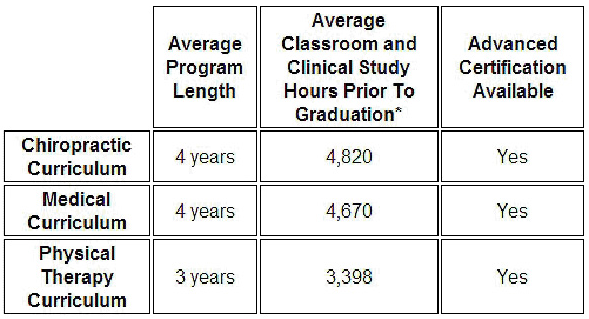Stretch your body- stretch your life.
STRETCH YOUR BODY–STRETCH YOUR LIFE
Presence of pain in our bodies’ musculoskeletal system could be a result of many factors, such as improper posture, prolonged periods of sitting, standing, reaching — all as a part of our daily jobs. Although these habits may be difficult to eliminate or to even change, they are, ultimately, subject to the mind’s conscious control. It is what happens when we aren’t consciously aware of our body that becomes the most drastic causative factor in resulting distortions of the spine as well as both acute and chronic musculoskeletal pain.
After more than 25 years as a practicing physician–fifteen years as a medical doctor and the remaining as a doctor of chiropractic, I have arrived at the conclusion that patient’s preferred sleeping position over a prolonged period is largely responsible for the problems with their spine. A clear pattern began emerging for me after seeing patients with complaints of neck, extremity, as well as mid and lower back pain. Aside from serious injury, almost all of these patients, like everyone else, have spent decades sleeping in a manner that has caused mis-alignment of their spines. Hours, days and years spent preferring one side or the other have resulted in the specific migration of certain vertebrae out of proper position in vertebral column and decreasing their mobility. Consequently, when I examine a patient I can deduce their preferred sleeping posture with almost utmost certainty.
As it turns out, sleep position alone can result in pain from misalignment and hyper-mobility in neck region, mid-scapular area and sacro-iliac joints with the frequency of 99 percent on the preferred side for sleeping. For example, if you typically sleep on your right side you may notice that the right side of your neck, shoulders, or even your lower back develop a chronic discomfort that eventually leads to pain.
While most injuries to the musculoskeletal system can be prevented, neck and back pain as a result of poor sleeping posture does not discriminate–absolutely everyone is at risk. If a third of our lives is spent in the recumbent position while sleeping, then we spend several decades, on average, distorting our spine without being consciously aware of it.
So now that we have discussed the negative effects of poor sleeping posture, how can we effectively reduce and prevent the misalignment injuries that result from it? The foundation for eliminating back pain is a high quality bed and pillows. Creating the perfect sleeping environment should begin with the selection of a good mattress. It should offer support for your body while, at the same time, absorb the pressure that comes from its own weight. A well constructed feather and down pillow will also support the neck region and it can be easily molded into the most comfortable shape for your neck.
The next step is to begin to train your body to alternate your sleeping position. If you favor the right side, make an effort to switch to the left several times throughout the night. Even if you usually fall asleep on your back, try switching to your sides so that the pressure of your body’s weight may be supported from varying angles and the same muscles and bones are not stressed every single time you sleep.
Thirdly, and perhaps most importantly, it is absolutely necessary to perform stretching exercises. Through my years of experience in Chiropractic care and rehabilitation medicine, I have developed an original approach to stretching exercises that with regular use will help the entire body regain the optimum range of motion. The key is to perform a particular exercise just once, or a set of stretching exercises with a single repetition. It will take just seconds away from your day, and it doesn’t require any special equipment or a designated space. Not only will this method help you to build good exercise habits, it will maintain your body’s optimal mobility as well.
Depending on the severity of symptoms or the state of discomfort in a specific area of your body, these stretching exercises need to be performed every 1, 2, or 3 hours. This regiment is highly beneficial, even for diligent health club attendants. Though they may work out one to two hours every day, the majority of their day is comprised of sitting behind a desk or in front of a computer.
Recommendation for stretching exercise: Perform the exercises slowly, avoid sudden movements, and gradually increase the range of motion until a slight sensation of soreness is attained. At this point, the pose should be held for 20 seconds throughout the body, or 5 seconds in the neck region. It is extremely beneficial to use breathing to enhance and improve each move. For example, in the cervical neck exercise, perform the move taking three full breaths in and out; at the end of each exhalation, use your arm to increase the range of motion to deepen each stretch. Once again, make sure to do each move slowly, carefully, while paying attention to your body’s signals, and without overextending the stretch beyond a slight sensation of soreness.
This is a regiment that I have been following myself for years and it is absolutely essential for the optimal health of every patient that I treat.
Furthermore, if you are not able to alleviate your back and neck pain by following the above recommendations, you should consider seeing a licensed Doctor of Chiropractic. A qualified chiropractor can ‘visualize’ the misalignment of any of the 24 movable vertebrae in our spines and restore their position with the use of his or her hands (after all, “Chiro” means “hand” in Greek). Regaining the proper alignment in the spine is the same as opening up the largest and most important highway system in our bodies. The spine, being the link between our brain and the rest of the body, allows the nervous system to regulate the balance in our bodies and reach the ultimate homeostasis that is health.
Lastly, the absolute key in ensuring success in treatment of neck and back pain is regular maintenance. Just like going to see the dentist for regular cleanings to avoid periodontal disease and cavities, seeing a Chiropractor on a regular basis helps prevent pain from manifesting in the first place. The truth is, lack of acute or persistent pain is not evidence enough that there are no problems in your spine, because pain is actually the last symptom that appears after prolonged injury. Your chiropractor will recommend a regular interval of visits to ensure that your spine and associated muscles will be properly maintained and your home care- including proper sleeping posture and regular stretching- will help maintain the optimal health of your body.
I hope you’ll consider the information in this article and motivate yourself to start improving your habits. I am convinced that adhering to the above recommendations will help you achieve optimal health of your spine and will help improve the overall quality of your life. As always, I wish you all the best.
Dr. Andre Pisarev



